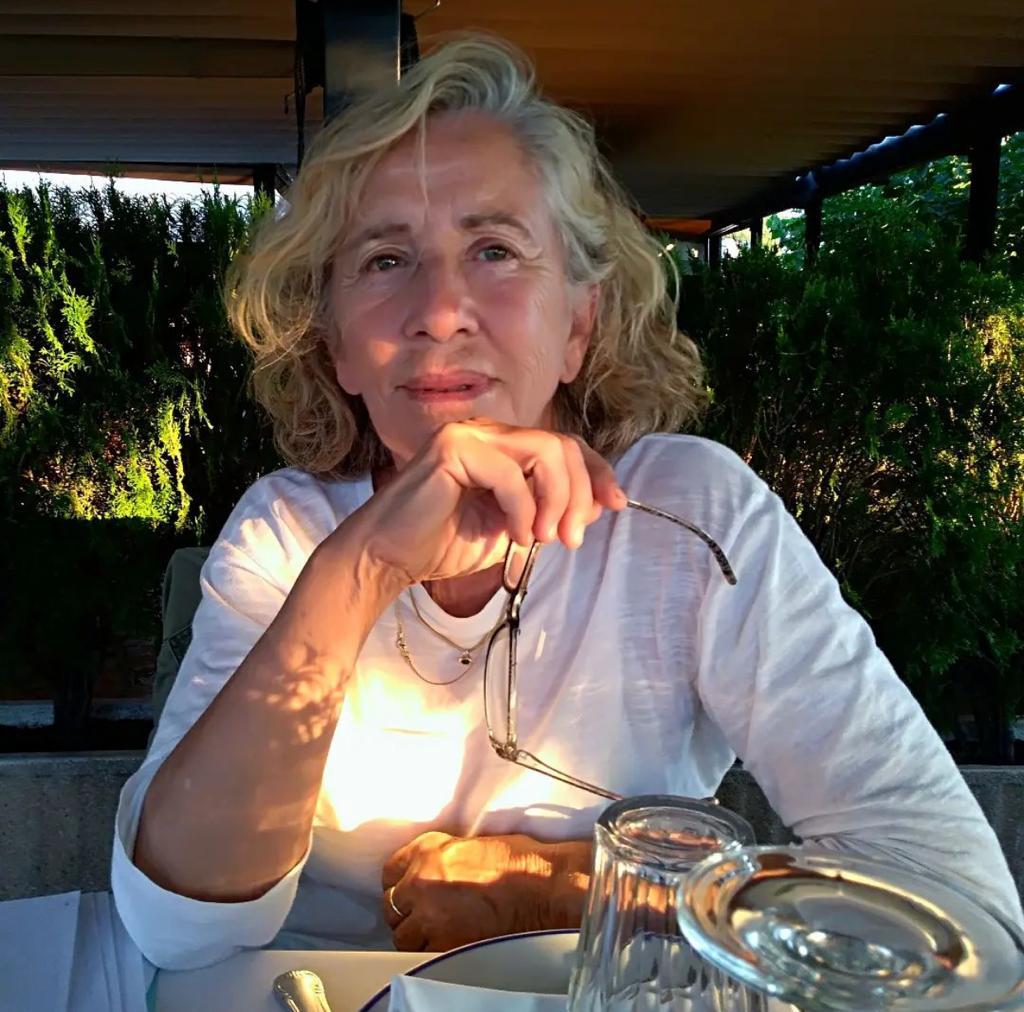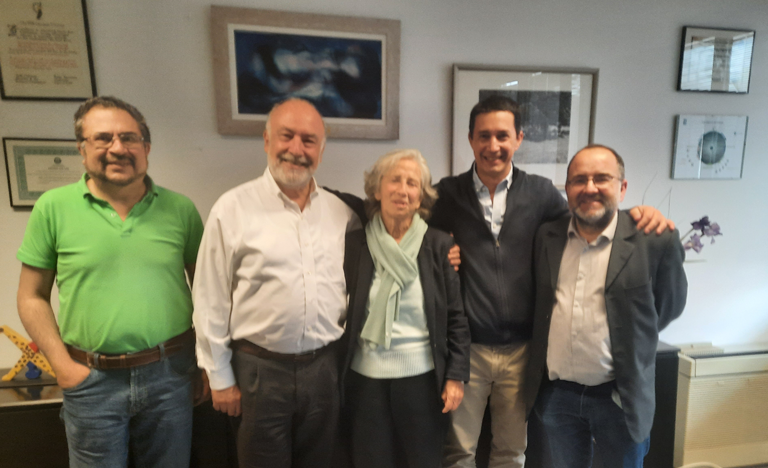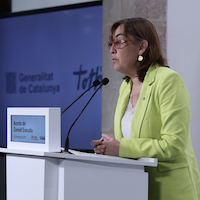news
Fallecimiento de Francisca García-Sicilia / Death of Francisca García-Sicilia
 Escribo estas líneas con gran pesar, al haber recibido la triste noticia del fallecimiento de Francisca García-Sicilia la mañana del 18 de mayo. En el momento de su muerte estaba acompañada de sus dos hijos Chincho y Yosco, de sus nietos y de otros familiares cercanos. Una gran pérdida para todos los que la conocíamos, y también para CIMNE.
Escribo estas líneas con gran pesar, al haber recibido la triste noticia del fallecimiento de Francisca García-Sicilia la mañana del 18 de mayo. En el momento de su muerte estaba acompañada de sus dos hijos Chincho y Yosco, de sus nietos y de otros familiares cercanos. Una gran pérdida para todos los que la conocíamos, y también para CIMNE.
La salud de Francisca estaba muy deteriorada en los últimos tiempos por un cáncer que se extendió demasiado rápido y afectó a órganos vitales, hasta inducirle la muerte.
Consciente de la gravedad de su enfermedad hizo un gran esfuerzo para visitarnos por última vez en CIMNE el pasado 3 de mayo, lo que agradecimos profundamente.
Francisca era uno de esos personajes irrepetibles, cuya vida, y en particular su dedicación y aportaciones a CIMNE, es difícil de resumir en pocas líneas.
Llegó a CIMNE en los inicios del centro, allá por el final de la década de los 1980, de la mano del Dr. Luis Ramallo. Luis era, y sigue siendo, el Presidente de la Comisión Española de la Unesco. Necesitábamos a dos personas que representaran a Unesco en los órganos de gobierno del centro, al figurar Unesco en los estatutos de CIMNE por haber jugado un papel esencial en su creación. Luis ocupó desde el inicio un puesto en el Consell de Govern del centro y Francisca fue, desde entonces la representante de Unesco en la Comisión Ejecutiva de CIMNE, hasta bien recientemente.
Como representante de UNESCO en CIMNE, Francisca ha ayudado a la gestión de la Cátedra Unesco de Métodos Numéricos en Ingeniería, creada en 1989 en la UPC por iniciativa de CIMNE. Esta fue la primera Cátedra Unesco del mundo, lo que ha conferido a la UPC, y por extensión a CIMNE, un estatus especial en el conjunto de los centenares de Cátedras Unesco que se han creado desde entonces en muchos países.
Durante más de tres décadas Francisca ha estado activamente implicada en diversos proyectos relacionados con las actividades internacionales de CIMNE. Tuvo una participación muy relevante en la creación de la sede de CIMNE en la ciudad de Washington en Estados Unidos, y trabajó en la misma impulsando varios proyectos. También colaboró con las oficinas de CIMNE en China y Singapur, y desde esta última impulsó relaciones con empresas y universidades en Malasia y del propio Singapur. Su actividad más destacada en CIMNE en los últimos años ha estado relacionada con el impulso de las Aulas CIMNE.
Francisca se implicó personalmente en la creación de varias Aulas en diversos países de Latinoamérica y mantuvo una relación permanente con todos los miembros de la Red de Aulas CIMNE, formada hoy por una treintena de Aulas, de las cuales unas veinte están en países de Latinoamérica (Argentina, México, Cuba, El Salvador, Brasil, Chile, Perú, Colombia y Guatemala). Todo ello en sintonía con el espíritu de la Cátedra Unesco de la UPC antes mencionada, y de la red UNITWIN de UNESCO para establecer redes de cooperación entre organizaciones de diferentes países en apoyo de la educación superior y el progreso. Sus conexiones con UNESCO en Madrid y París han sido de gran utilidad para organizar en Barcelona diversas reuniones internacionales en apoyo de la Red de Aulas CIMNE, con participación de los directores de las Aulas, los rectores de las universidades españolas e iberoamericanas en las que están ubicadas, y diversas autoridades académicas y políticas.
Con el fin de impulsar el proyecto de Aulas CIMNE, participó en la creación de la Asociación Internacional de Aulas CIMNE (AIAC) de la que forman parte las Aulas y sus directores. Hasta recientemente, era uno de los miembros del órgano gestor de AIAC. Destacó también el apoyo de Francisca a la gestión de las publicaciones científicas de CIMNE, contribuyendo ideas y proyectos fruto de su experiencia en ese campo por haber trabajado como directiva en una de las principales empresas internacionales del sector.
Francisca era una persona de carácter entrañable y de una gran sencillez. Desprendía una profunda humanidad y una empatía que le hacía ganar amigos rápidamente allá donde iba. Era muy intrépida y decidida, y tenía total disponibilidad y ánimo para emprender cualquier tipo de misión a los confines de la tierra para impulsar proyectos de CIMNE. Tuve la oportunidad de comprobar todas estas cualidades en numerosas ocasiones, y siempre estuve muy agradecido en cómo las puso a disposición de los muchos proyectos de CIMNE en los que participó.
Personas como Francisca han sido las que han configurado las señas de identidad de CIMNE. Gracias a su esfuerzo continuado, CIMNE, y las personas que en él trabajamos, disponemos de una red de amigos en todo el mundo, dispuestos a colaborar con nosotros en actividades de formación y de I+D+i. Ese es el legado que nos ha dejado, y por el que le estaremos siempre agradecidos. Nunca la olvidaremos. Descanse en paz.
Eugenio Oñate
Vicepresidente de CIMNE
Catedrático de la UPC

Visita de Francisca García-Sicilia a CIMNE el 3 de mayo de 2022. De izquierda a derecha: Francisco Zárate (presidente de AIAC), Eugenio Oñate, Francisca, Javier Piazzese (Dtor. de Compass SL), y Pedro Arnau (investigador de CIMNE)
I write these lines with a big sadness, having received the sad news of the death of Francisca García-Sicilia on the morning of May 18th. At the time of her death, she was accompanied by her two sons Chincho and Yosco, her grandchildren and other close relatives. An enormous loss for all of us who knew her, and also for CIMNE.
Francisca's health was very deteriorated in recent times due to cancer that spread too quickly and affected vital organs, until it caused her death.
Aware of the seriousness of her illness, she made a great effort to visit us for the last time at CIMNE on May 3rd, which we greatly appreciated.
Francisca was one of those unrepeatable characters, whose life, and in particular her dedication and contributions to CIMNE, is difficult to summarize in a few lines.
She arrived in CIMNE at the early days of the centre, towards the end of the 1980s, by the hand of Dr. Luis Ramallo. Luis was, and still is, the President of the Spanish Commission for UNESCO. We needed two UNESCO representatives in the centre's governing bodies, since UNESCO appears in the CIMNE statutes for having played an essential role in its creation. From the beginning, Luis occupied a position in the Governing Council of the centre and Francisca was, since then, the UNESCO representative in the Executive Commission of CIMNE, until very recently.
As a UNESCO representative at CIMNE, Francisca has helped manage the UNESCO Chair in Numerical Methods in Engineering, created in 1989 at UPC after the initiative of CIMNE. This was the first UNESCO Chair in the world, which has given UPC, and by extension CIMNE, a special status among the hundreds of UNESCO Chairs that have been created since then in many countries.
For more than three decades Francisca has been actively involved in various projects related to CIMNE's international activities. He had a very relevant participation in the creation of the CIMNE headquarters in the city of Washington in the United States, and worked there promoting several projects. He also collaborated with the CIMNE offices in China and Singapore, and from the latter he promoted relationships with companies and universities in Malaysia and Singapore itself.
Her most outstanding activity at CIMNE in recent years has been related to the promotion of the CIMNE Classrooms. Francisca was personally involved in the creation of several Classrooms in various Latin American countries and maintained a permanent relationship with all the members of the CIMNE Classroom Network, today made up of thirty Classrooms, of which about twenty are in Latin American countries (Argentina, Mexico, Cuba, El Salvador, Brazil, Chile, Peru, Colombia and Guatemala). All this in line with the spirit of the UNESCO Chair of the UPC mentioned above, and of the UNESCO UNITWIN network to establish cooperation networks between organizations from different countries in support of higher education and progress. Her connections with UNESCO in Madrid and Paris have been very useful for the organization of various international meetings in Barcelona to support of the CIMNE Classroom Network. These meetings counted with the participation of the directors of the Classrooms, the rectors of the Spanish and Ibero-American universities involved and various academic and political authorities.
In order to promote the CIMNE Classrooms project, Francisca participated in the creation of the International Association of CIMNE Classrooms (AIAC) of which the Classrooms and their directors are a part. Until recently, she was one of the members of the managing body of AIAC.
It has also to be highlighted the Francisca's support to the management of CIMNE's scientific publications, contributing with ideas and projects resulting from her experience in this field, acquired during the days she worked as a manager in one of the main international companies in the publishing sector.
Francisca was a person of endearing character and great simplicity. Her exuded a deep humanity and an empathy that made her quickly win friends wherever he went. She was very intrepid and determined, and had total availability and courage to undertake any type of mission to the ends of the earth in order to promote CIMNE projects. I had the opportunity to verify all these qualities on numerous occasions, and I was always very grateful for how she made them available to the many CIMNE projects in which she participated.
People like Francisca have been the ones who have shaped the hallmarks of CIMNE. Thanks to their continuous effort, CIMNE, and the people who work in it, have a network of friends around the world, willing to collaborate with us in training and R+D+i activities. That is the legacy she has left us, and for which we will always be grateful. We will never forget her. Rest in peace.
Eugenio Oñate
Vice President of CIMNE
Professor at the UPC




















